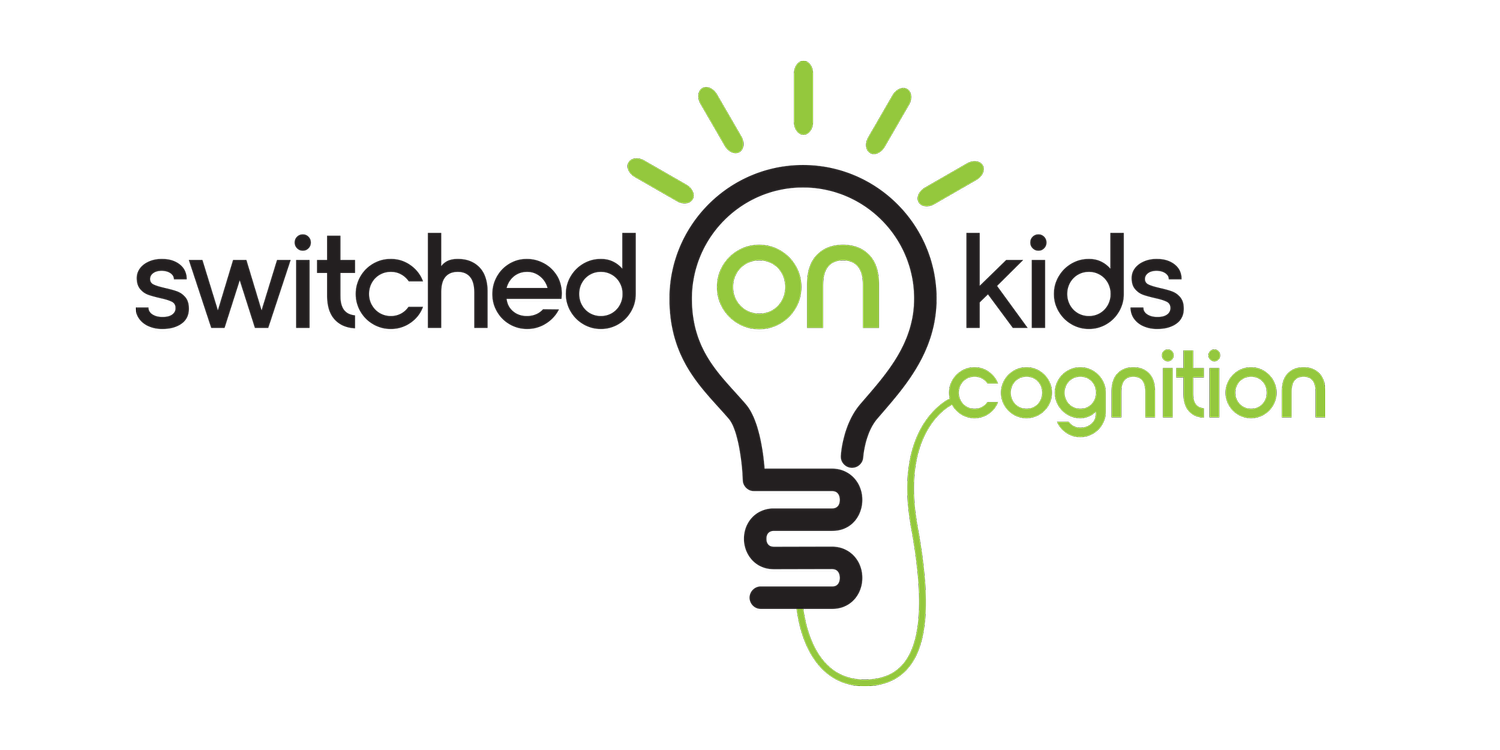Cognitive skills for anxious kids
Anxiety influences how we perceive the world. It takes over the internal dialogue we have in our heads and turns it into verbal worry and negative chatter. Anxiety often develops in childhood. Statistics from 2015 show that 6.9% of all Australian children have an anxiety disorder (Lawrence et al., 2015). The term “anxiety disorder” references a group of conditions rather than a single disorder. A child may have social phobia, generalized anxiety disorder, separation anxiety disorder or obsessive-compulsive disorder. The common characteristic of all of these conditions is that they cause children to experience persistent and excessive worries and fears that affect their ability to cope with daily tasks (including schooling) as well as their enjoyment of life.
Anxiety impacts cognitive skills such as memory and executive functions and has an impact on how a child functions both socially and in the classroom. It is hard to know what comes first. Do deficits in cognitive skills cause a child to become anxious? Or does underlying anxiety make it difficult to learn and develop age-appropriate cognitive skills? Most likely, there is a feedback cycle whereby the two interact. The presence of anxiety will affect a child’s ability to learn. Likewise, issues such as slow processing speed or poor memory can result in a child feeling overwhelmed and anxious.
Anxious children have a perceptual bias towards threat (or perceived threat). This has a profound effect on how information is processed and the amount of verbal and visual-spatial information that working memory can hold (remember, working memory capacity is surprisingly limited). If an anxious child perceives a threat (real or imagined) they will come off-task and find it difficult to return to that task (Bar-Haim et al., 2007). People who have severe anxiety find it very difficult to separate themselves from scary words and images and return to the task that they are doing (Grant et al., 2015).
Anxiety has a detrimental effect on working memory. Working memory is a critical executive function skill. Children use working memory to hold information in their mind, and manipulate and update it. For example, as kids read, they must decode, hold words in memory, remember what they have just read and comprehend facts or stories. Working memory is like the sketch- or note-pad of our brain. To be able to learn effectively, working memory must be as free of clutter as possible. What anxiety does is add an extra item that must be processed before a child can continue their work. This might be experienced as a nagging or intrusive thought, an uncomfortable feeling or a worry.
Anxious individuals are unable to hold as many numbers in memory and do not perform as well on tasks that assess verbal working memory (Leigh & Hirsch, 2011). Numerous studies have shown an association between poor verbal fluency and anxiety (Toazza et al., 2016). Verbal fluency is the ability to find the right words, at the right time and in the right situation. Verbal fluency facilitates the retrieval of information from memory. Children rely on verbal fluency when they speak to friends, or contribute in the classroom. Verbal fluency is usually measured by asking a child to come up with as many words as possible beginning with a certain letter within a set time (e.g., tell me as many words as you can that begin with “F” in 1 minute). Verbal fluency is widely accepted as a measure of executive functioning. To be able to quickly retrieve words a child must be able to pay attention, inhibit irrelevant information (e.g., words beginning with “R”), self-monitor (have I said that word?), and mentally switch between sets (e.g., foods that begin with “F”, places that begin with “F” etc).
Memory and language impairments are associated with the severity of an anxiety disorder in childhood. A recent study by Sbicigo et al. (2020) found deficits in memory (visuospatial working memory and semantic memory) and language deficits (oral and written) in children with an anxiety disorder. The more severe the anxiety disorder, the poorer the child performed. Several studies have found an association between anxiety disorders and poor visual working memory (Vance et al., 2013).
The combination of cognitive difficulties and anxiety makes the classroom a difficult environment for an anxious child. They will feel fatigued, and overwhelmed and experience overload. Difficulties with the classroom environment are reflected in Australian statistics. The 2015 data showed that for young kids (ages 4-11), the presence of any anxiety disorder was associated with 6 days off school. This problem didn’t go away. It got worse. For kids aged 12-17 the presence of any anxiety disorder was associated with 20 days absent from school (Lawrence et al., 2015).
While it is well-known that anxious children have difficulties with specific cognitive skills, for the most part, therapists do not tend to treat these problems. The gold-standard treatment for childhood anxiety disorders is cognitive-behavioural therapy (CBT).
Interventions targeting verbal fluency, memory, working memory, and executive functions at a young age can help minimize anxiety. Cognitive effects associated with anxiety may be subtle and it is important to remember that an anxious child is unlikely to have had a full neuropsychological assessment to quantify these deficits (unless they have a co-morbid diagnosis of ADHD or autism).
So how can we help and support these kids?
I love the work of Mona Delahooke [https://monadelahooke.com/]. She reminds us that to understand and help our anxious children we must first understand their nervous systems and how their brains are wired. Our brain is wired to respond when we are scared. Neurochemicals (e.g., adrenaline) flood our bodies and our hearts pound. We prepare ourselves for fight, flight or freeze. At the same time, our cognitive systems are working hard to problem-solve. “What is it? Have I seen this before? What should I do? Is it that bad? Will it go away?” Anxiety is exhausting for kids and depletes working memory and other high-level cognitive skills.
Anxious children show differences in the electrical activity of the brain. The difference is specifically seen in an electrophysiological (EEG) marker associated with “error detection”. This biomarker has been found in anxious children as young as 6. (Meyer et. al., 2015). Interestingly, one study showed that the brains of anxious girls are working harder than those of boys. Anxious girls showed higher levels of brain activation when they made mistakes during a reasonably simple task. The authors note that - "Anxious girls' brains have to work harder to perform tasks because they have more distracting thoughts and worries” (Moran et al., 2012).
This means we have a young brain that is wired and biased toward noticing errors and feeling fear. To help these kids:
Firstly, we must ensure that they feel safe and supported both at home and in the classroom. Safety is the starting point and our anxious children will need more reassurance that they are safe.
A calm and understanding environment is important.
Avoid additional stressors such as timed tests or reading out loud.
Next, we must help these kids to boost skills. For example, if a child has poor processing speed, verbal fluency, language or working memory difficulties we must provide them with opportunities to improve these skills.
Anxious children may need a more time to move between tasks as they find it more difficult to switch from one task to another (Ansari & Derakshan, 2011). In the classroom, kids are regularly required to switch between tasks. Anxious children cannot inhibit distractions if they feel scared.
We know that the brain (EEG) marker for anxiety is associated with a heightened error detection system. For this reason, it makes sense to assist our anxious children with skills such as “cognitive flexibility”. Anxious children tend to get “stuck” or freeze when they make a mistake. Kids need practice to develop the cognitive skills and internal self-talk to say “It is okay; mistakes happen; errors occur; I got it wrong … it doesn’t matter”. Anxious children should be encouraged to use cognitive control and self-talk to protect themselves when they are feeling anxious.
The idea that kids can decrease anxiety by improving cognitive skills is currently being assessed in a US study called Kid Power where kids attend a camp and play games that help to strengthen cognitive control. Examples of games include “Simon Says” and “Red Light/Green Light”. The researchers then increase the challenges so that kids must master skills such as using working memory, being flexible, and inhibiting incorrect responses (e.g., moving when they should freeze). Children were encouraged to continue playing the games at home. The researchers measured the startle response and EEG both before kids attended the camp and 4-6 weeks later. They found a decrease in the “startle response” and changes in the way the brain responded to errors. Parents reported that following the training kids had fewer anxiety symptoms and were less likely to avoid challenging situations.
This research is encouraging. Given that, we know that children with anxiety struggle with specific cognitive skills and that we know that these skills can be improved, we have all of the ingredients to help these kids. It may take a little extra time for a very anxious child to develop certain cognitive skills (remember their brain is already working hard to detect “threat”), however, if we provide a safe environment and nurture specific skills, we can help these children to learn and their potential calmly and competently.
Please contact me HERE if you would like to work on cognitive skills with your anxious child - Kylie Maidment
References
Ansari, T. L., & Derakshan, N. (2011). The neural correlates of impaired inhibitory control in anxiety. Neuropsychologia, 49, 1146-1153.
Bar-Haim, Y. et al. (2007). Threat-related attentional bias in anxious and non-anxious individuals: A meta-analytic study. Psychological Bulletin, 133(1): 1-24.
Derakshan, N. et al. (2009). Anxiety, inhibition, efficiency and effectiveness: An Investigation using the anti-saccade task. Experimental Psychology, 56(1):48-55.
Grant, D.M. et al. (2015). Worry and discrimination of threat and safety cues. An event-related potential investigation. Behavior Therapy, 46(5):652-60.
Lawrence, D. et al. (2015). The Mental Health of Children and Adolescents. Report on the second Australian Child and Adolescent Survey of Mental Health and Wellbeing. Department of Health, Canberra.
Leigh, E., & Hirsch, C. R. (2011). Worry in imagery and verbal form: Effect on residual working memory capacity. Behavior Research and Therapy, 49(2): 99-105.
Meyer, A. et al. Self-reported and observed punitive parenting prospectively predicts increased error-related brain activity in six-year-old children. Journal of Abnormal Child Psychology, 43(5): 821-829.
Moran, T.P. et al. (2012). Sex moderates the relationship between worry and performance monitoring brain activity in undergraduates. International Journal of Psychophysiology, 85(2): 188-194.
Sbicigo, J.B. et al. (2020). Memory and language impairments are associated with anxiety disorder severity in childhood. Trends in Psychiatry & Psychotherapy, 42(2): 161-170.
Toazza, R. et al. (2016). Phonemic verbal fluency and severity of anxiety disorders in young children. Brief Communications, Trends in Psychiatry & Psychotherapy, 38(2): 100-104.
Vance, A., et al. (2013). Examination of spatial working memory performance in children and adolescents with attention deficit hyperactivity disorder, combined type (ADHDCT) and anxiety. Journal of Abnormal Child Psychology, 41:891-900.


